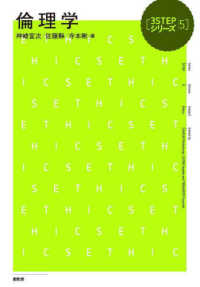- ホーム
- > 洋書
- > 英文書
- > History / World
Full Description
Samita Sen's history of labouring women in Calcutta in the late nineteenth and early twentieth centuries considers how social constructions of gender shaped their lives. Dr Sen demonstrates how - in contrast to the experience of their male counterparts - the long-term trends in the Indian economy devalued women's labour, establishing patterns of urban migration and changing gender equations within the family. She relates these trends to the spread of dowry, enforced widowhood and child marriage. The book provides insight into the lives of poor urban women who were often perceived as prostitutes or social pariahs. Even trade unions refused to address their problems and they remained on the margins of organized political protest. The study will make a signficant contribution to the understanding of the social and economic history of colonial India and to notions of gender construction.
Contents
List of tables; Acknowledgements; List of acronyms and abbreviations; Glossary; Map: location of Jute mills along river Hooghly; Introduction; 1. Migration, recruitment and labour control; 2. 'Will the land not be tilled?': women's work in the rural economy; 3. 'Away from homes': women's work in the mills; 4. Motherhood, mothercraft and the Maternity Benefit Act; 5. In temporary marriages: wives, widows and prostitutes; 6. Working-class politics and women's militancy; Select bibliography; Index.








